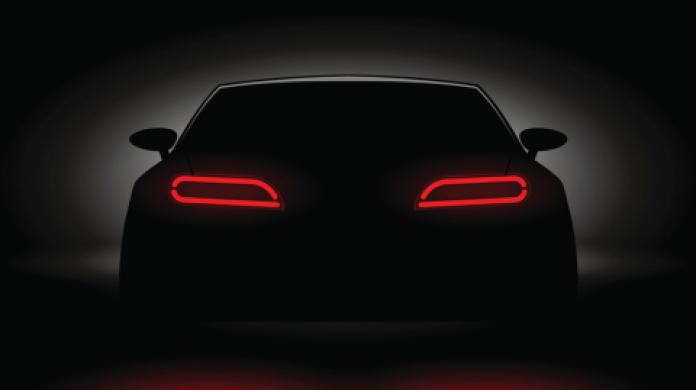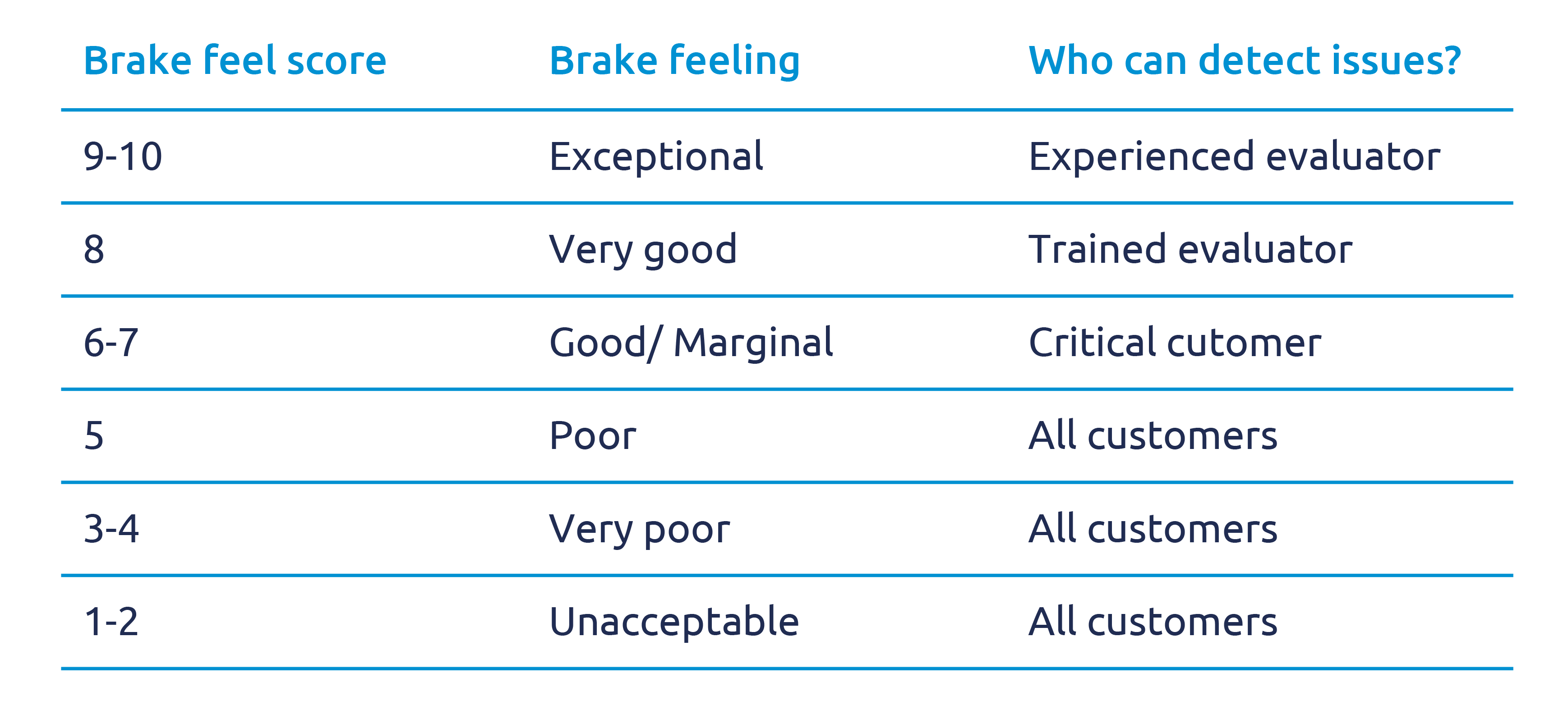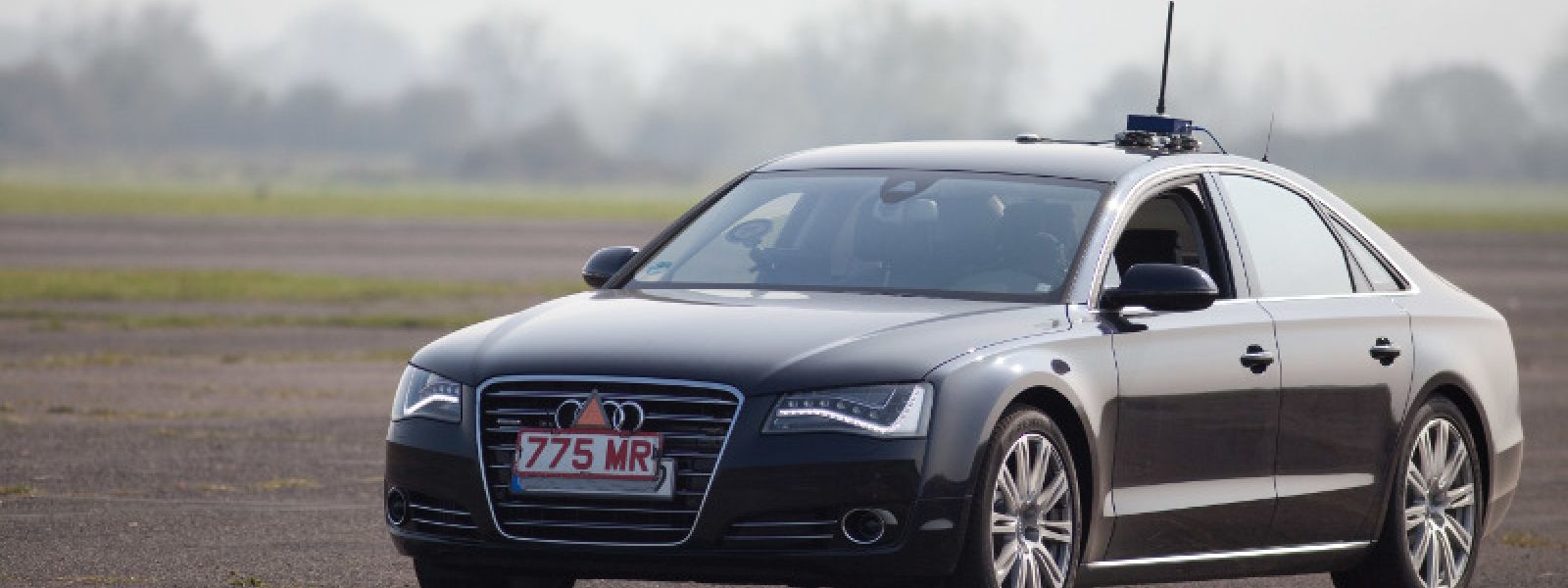
Electric vehicles (EVs) are becoming more popular as they offer many benefits such as lower emissions and reduced fuel costs. However, one of the key challenges that EV manufacturers face is how to ensure that the brake system of their vehicles provides a consistent and comfortable feel for drivers. This is especially important for hybrid systems that combine mechanical and regenerative braking, which can vary depending on the battery state, the friction level, and the driving conditions.
In this blog post, Allan Johnstone, Principal Project Engineer at AB Dynamics discusses a novel solution developed by AB Dynamics that enables objective data analysis of the brake feel of hybrid systems and explains how brake robots, control and analysis software, and a brake rating index can help engineers to optimise the brake controller, benchmark competitor systems, and validate brake system performance.
Winning the EV revolution
The winners of the EV revolution will be those manufacturers that remove, or reduce as much as possible, the barriers to adoption. A fundamental challenge for EV manufacturers has been the integration of complex hybrid braking systems, combining the traditional mechanical foundation brake and the electric regenerative system. Ensuring the brake system feels consistent to what consumers have already become accustomed to is a critical barrier to overcome.
The challenge for engineers is to seamlessly blend the two systems together while maximising regenerative braking to recharge the battery to maximise vehicle range. This is most commonly achieved by using a brake-by-wire system, where the pedal characteristic, stroke and load are provided by a pedal simulator element and the braking demand by a stroke sensor. The brake controller blends the two systems to produce the required deceleration requested by the driver.
Commonly in EVs the driver experiences varying levels of deceleration for the same braking demand, making the brake feeling unpredictable at best, or at worst unsafe, which can lead to costly recalls. This is often caused by the variables within the system, such as the state of charge of the battery and the friction level between disc and pad, which changes with temperature, moisture levels and wear.
Traditionally, brake feel has relied solely on the subjective assessment of brake engineers. In order to change this and to prevent poor brake feel it is key to inject thorough objective test data into the development process. This enables engineers to analyse the braking system at all variable points, optimise the brake controller, assess individual components, accurately benchmark competitor systems, and support subjective feedback that can often be misinterpreted.
AB Dynamics has developed what it believes to be the industry’s first objective brake feel assessment solution that uses brake robots fitted to the subject vehicle together with control and analysis software. Our solution enables the objective testing of a vehicle’s braking system and provides an automated analysis upon completion of the testing. The software uses an algorithm to assess the vehicle’s brake feel based on the SAE brake rating index.

The data used for the analysis is acquired through our brake robots, which are specifically designed to provide accurate and repeatable applications of the brake pedal. They are widely used by the automotive industry for applications such as testing of ADAS technologies, durability, and misuse testing.
The control parameter can be pedal stroke, pedal load, a level of deceleration or a mixture of the three. The result is quantifiable measurements of the vehicle’s brake system across various conditions and vehicle speeds. Our solution automatically assesses a wide range of aspects including stroke effectiveness, load effectiveness, booster reaction and low and high-speed build-up to determine the three key areas that contribute to brake feel: system stiffness, system response and friction characteristics.
AB Dynamics has worked with expert brake system evaluators to convert this objective data into a usable subjective score to provide an instant judgement of overall brake feel. This gives engineers more confidence in assessing and signing off the brake system by knowing that their evaluation is supported by objective data.
Critically, the data produced by our brake feel analysis system also enables the development of an accurate digital model of the braking system for incorporation into vehicle models and virtual validation. The brake feel tool can also be integrated into a Hardware-In-the-Loop (HIL) test rig. This enables the control of the blended braking system to be matured well ahead of a physical prototype vehicle, saving significant time and money.
Key takeaways:
- Brake feel is a critical factor for EV adoption, as consumers expect a consistent and comfortable braking experience.
- Hybrid braking systems are complex and challenging to optimise, as they depend on multiple variables such as battery state, friction level, and driving conditions.
- AB Dynamics has developed a unique solution that enables objective data analysis of the brake feel of hybrid systems, using brake robots, control and analysis software, and brake rating index.
In the next part of this blog series, a working example of AB Dynamics’ assessment tool will be presented. In the meantime, if you want to learn more about our solution and how it can help you improve your EV brake feel, you can visit our website or contact us at info@abdynamics.com

